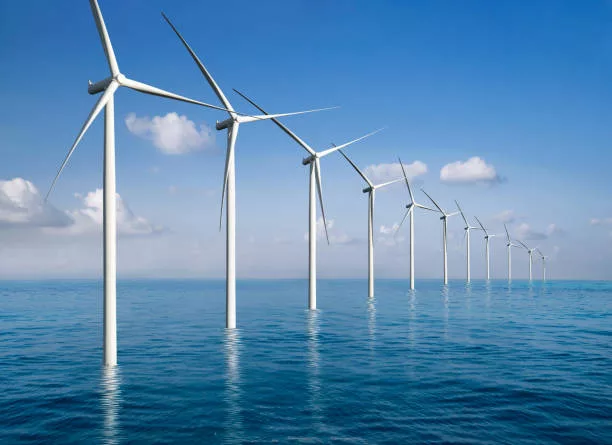Amid uncertainties in the US offshore wind sector, a promising development has emerged with the advancement of a novel floating wind platform by Ocergy, a US-based company. Ocergy has recently drawn new investment to fast-track the commercialization of its technology that aims at slashing costs and expediting construction by leveraging a unique manufacturing approach.
Ocergy’s Wind Energy Prowess
With its entrance in 2019, Ocergy may be new to some, but it’s quickly making waves. Distinguished by their innovative floating platform known as OCG-Wind, the company has set forth three fundamental design principles aimed at redefining offshore wind energy efficiency.
Ocergy’s emphasis on a light design translates into a lower Levelized Cost Of Electricity (LCOE), increasing affordability over the platform’s lifetime. Additionally, their goal is for the turbines to approach maximum generation capacity nearly constantly. To achieve streamlined construction and delivery, Ocergy adopts a modular industrial process — constructing individual components that can be efficiently shipped and assembled near the offshore sites.
Engineering for Gargantuan Turbines
Ocergy has tackled the challenge of supporting today’s colossal wind turbines with a pioneering tensegrity structure. By adjusting the conventional tri-column design to incorporate a fourth pillar, the platform stabilizes, mitigating movement caused by waves, thereby enhancing the turbine’s efficiency. This inventive design also enables construction in shallower waters, broadening potential assembly locations.
What’s more, the equal distribution of weight across four columns streamlines the assembly process by circumventing the need for platform re-balancing as the turbine is erected. Notably, this configuration permits the use of existing cranes that can handle the immense stature of contemporary offshore wind turbines.
Reducing Offshore Wind Costs
In a bid to further cut expenses, Ocergy has opted for steel over the heavier concrete hulls traditional in some floating platforms, easing the final assembly and enabling more efficient fabrication methods. The company has aligned their platform design with the broader offshore wind sector trend of modular fabrication paired with local assembly; a combination pivotal for the economic viability of large-scale floating offshore wind projects.
Strategic Alliances and Investment
Moreld Ocean Wind is backing Ocergy’s venture, bringing a wealth of experience as an independent solutions provider specializing in floating offshore wind projects. This collaboration, alongside partnerships with Moreld Apply, Global Maritime, and Origo Solutions, underpins Ocergy’s modular construction ambitions to install entire wind farms within a single season.
HitecVision, a heavyweight in the private equity space and erstwhile oil and gas mainstay, now propelling into clean tech, has vested interests in Moreld Group, emphasizing its support for Ocergy. The latest boost for Ocergy has come from Octopus Energy through its Vector offshore wind fund. This investment aids in commercializing Ocergy’s technologies and accelerating their market expansion, further underscored by Ocergy’s recent foray into environmental data and biodiversity monitoring systems.
Revitalizing the US Offshore Wind Landscape
The US offshore wind industry has faced a turbulent journey, with the fluctuating tides of government policies and technological advancements. Recent events have seen New York State canceling leases for three wind farms due to unforeseen changes in turbine specifications. Nevertheless, the quest for alternative offshore wind procurement continues.
Amidst varying developments, the East Coast remains a hotspot for traditional fixed-platform wind farms due to favorable conditions. However, the major opportunity for Ocergy’s floating platforms lies on the Pacific coast, aligning with the geographical needs for floating technology.
As offshore wind development gathers momentum across various US regions, watchful eyes remain on emergent technologies like those from Ocergy, which look poised to bridge the gap between policy and innovation, steering the industry towards a more sustainable and cost-effective horizon.
